The Shoalhaven region, 200 kilometres south of Sydney, hosts a wide range of native wildlife, from more common species such as long-necked turtles and swamp wallabies to threatened species like hooded plovers, brush- tailed rock wallabies and the elusive spotted-tailed quoll. It’s also a prime region for agriculture that contributes significantly to the local economy. But this balance of thriving ecosystems and agricultural productivity faces serious threats from introduced predators – particularly the European red fox, wild dog feral cat.
To tackle the issue of foxes, the Shoalhaven Fox Control Program was launched in 2018 by the Shoalhaven Landcare Association. The program came about after local landholders began seeing the heavy impact foxes had on their livestock and wildlife and wanted to be involved in the solution. Initially, a five-month trial covering 13 properties, removed 50 foxes. These results showed how effective a coordinated approach could be and quickly led to a full-scale community-based effort.
The 2019/2020 summer bushfires ravaged the regions bushland and farmland alike. The impacts of foxes increased, with nowhere left for wildlife to hide. These bushfires also brought about federal government funding for Gillian Basnett, the National Feral Cat and Fox Management Coordinator, through the Centre for Invasive Species Solutions, to help community groups grapple with the impacts of these invasive predators. Gillian has worked with the Shoalhaven Fox Control Program to review their fox management plan to improve outcomes, provide resources and some training to the group and to assist with strengthening relationship with key partners in the region.
This assistance, along with further funding found by the group for the Shoalhaven Fox Control Program Coordinator, Ryan, the project has gone from strength to strength. Today, the program operates across 104 private landholdings, in a more targeted and coordinated way, with trained volunteers and land managers all working to curb the fox population, reduce their impacts and protect the Shoalhaven’s environmental and agricultural assets. The program links with fox and wild dog management being undertaken by others in the region such as NSW National Parks and Wildlife, Local Land Services and local government, who also work with Greg Mifsud, the National Wild Dog Management Coordinator. These coordinated, introduced predator management programs are successfully protecting both the Shoalhaven’s ecosystems and threatened species and local agriculture.
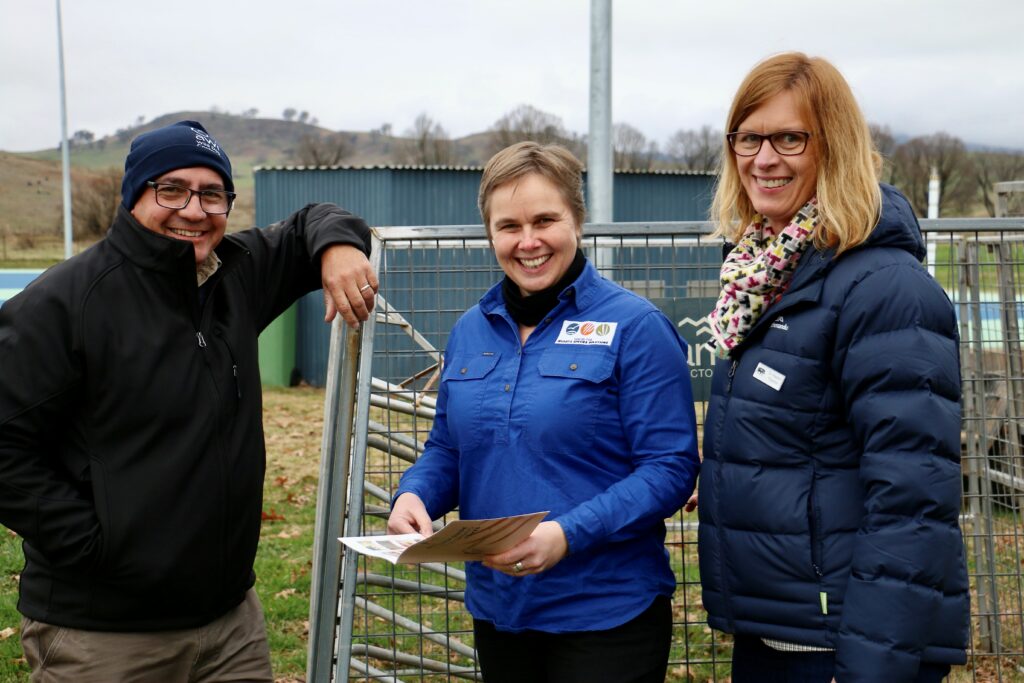
Did you know?
There are five National Management Coordination programs working to help support, encourage and empower communities to manage key pests? National management coordinators have taken a lead role working with Landcare and NRM groups, industry, communities, farmers, land managers, Indigenous Rangers, researchers, agencies and councils to reduce pest impacts on agriculture, environment, cultural assets and human health.
With core funding from the Australian Government, and support from their respective organisations (Centre for Invasive Species Solutions, South Australian Department of Primary Industries Regions, Australian Pork Ltd and Australian Wool Innovation) and partners, national coordinators:
- Provide national leadership and strategic coordination for sustained management
- Facilitate networks to promote cooperation, collaboration and ongoing investment
- Raise awareness of impacts of pest species
- Connect people with their peers, technical expertise and provide ‘how to’ information
- Encourage adoption of best practice methods
- Share research and land management stories.
To help Landcare groups, farmers, and land and pest managers tackle these six feral species the Coordinators have created user friendly websites, resources and newsletters. You can get in contact; learn how to plan, manage and improve your management programs; access latest research; or check out some of the pest management programs being undertaken across Australia.
Wild Dogs
National Coordinator: Greg Mifsud
Website: www.wilddogplan.org.au
Feral Deer
National Coordinator: Annelise Wiebkin
Website: www.feraldeerplan.org.au
Feral Pigs
National Coordinator: Heather Channon
Website: www.feralpigs.com.au
Feral Cats and Foxes
National Coordinator: Gillian Basnett
Website: www.feralcatandfox.com.au
Feral Rabbits
National Coordinator: Heidi Kleinert
Website: www.pestsmart.org.au/toolkits/european-rabbits
CISS useful resources
PestSmart: www.pestsmart.org.au
FeralScan: www.feralscan.org.au
For more information, please visit: Shoalhaven Landcare Fox Control Program
Watch these videos to learn more about these projects here: Protecting threatened species and agriculture in Shoalhaven
This initiative is made possible by the NSW Landcare Enabling Program, a collaboration between Local Land Services and Landcare NSW supported by the NSW Government.
Authors: Shoalhaven Landcare and the National Feral Cat and Fox Management Coordination Program
Banner Photo: Shoalhaven fox program workshop supplied by Ryan Wall
Middle Photo: Greg Mifsud, Gill Basnett, and Heather Channon supplied by NWDAP
Bottom Photo: National Coordinators and Ben Watts supplied by NFPAP
Article published in Landcare Australia’s ‘Landcare In Focus’ May 2025
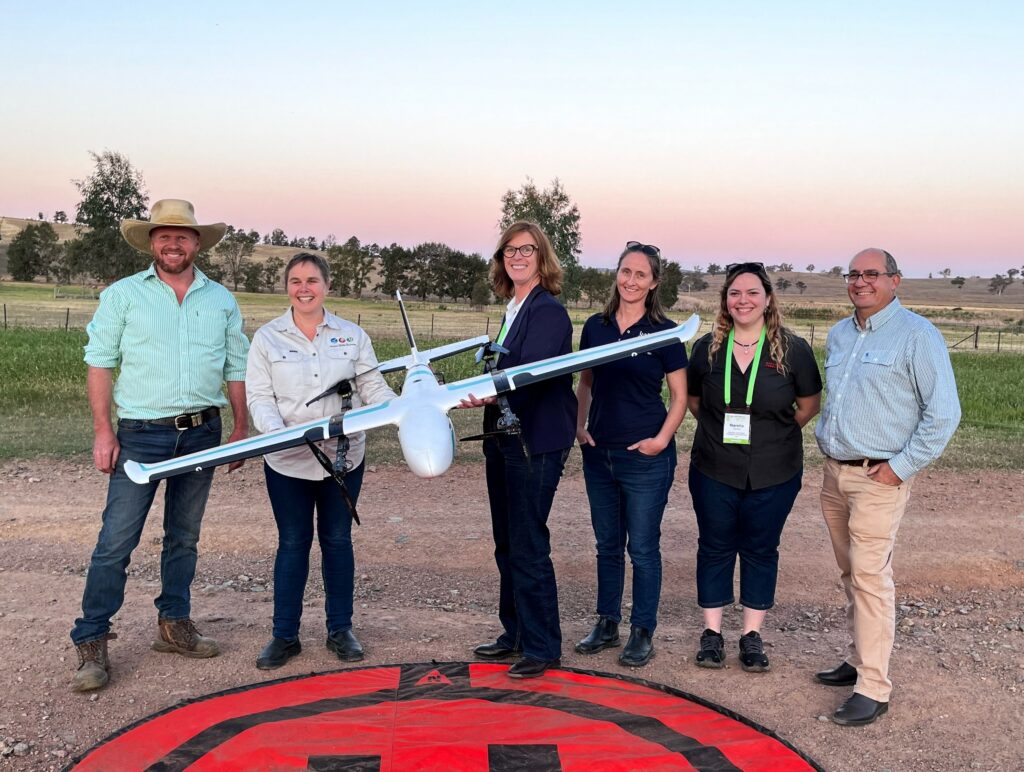
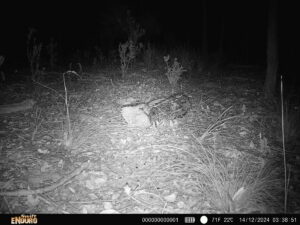
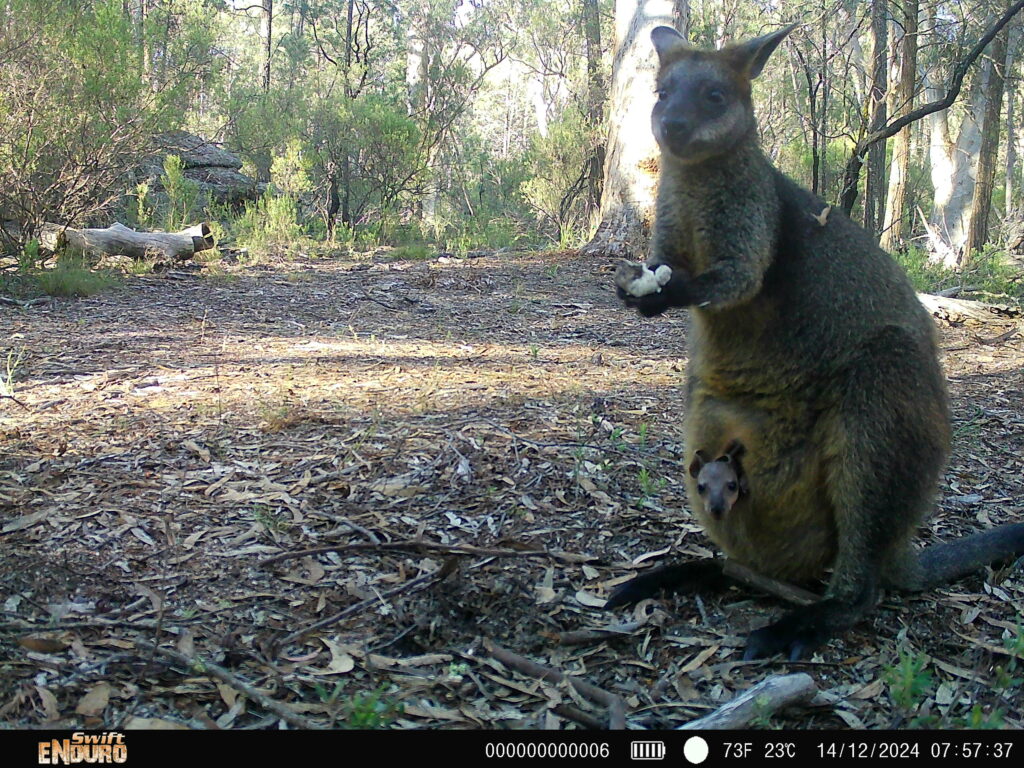
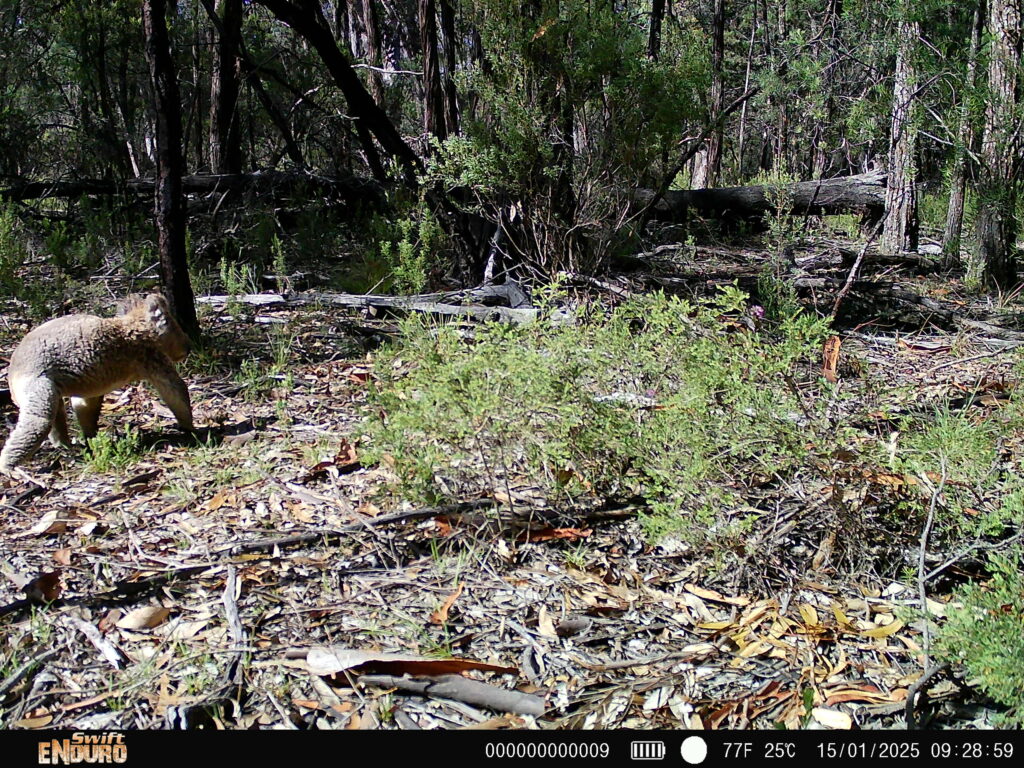
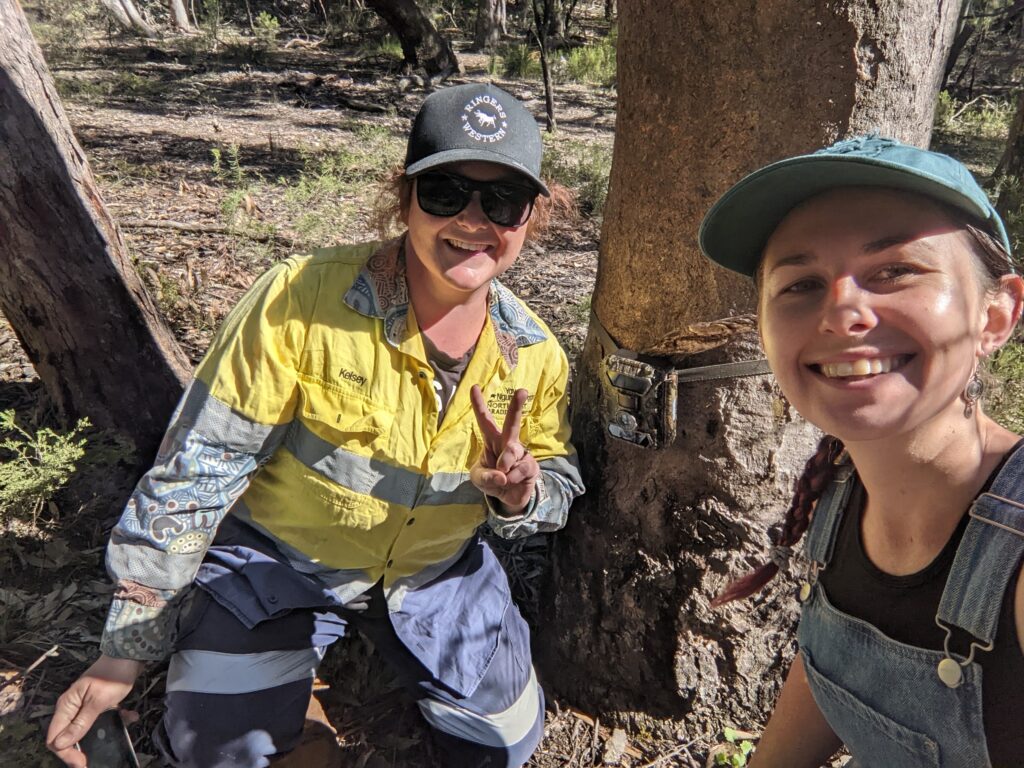
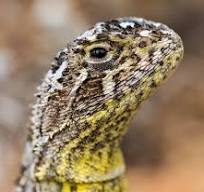
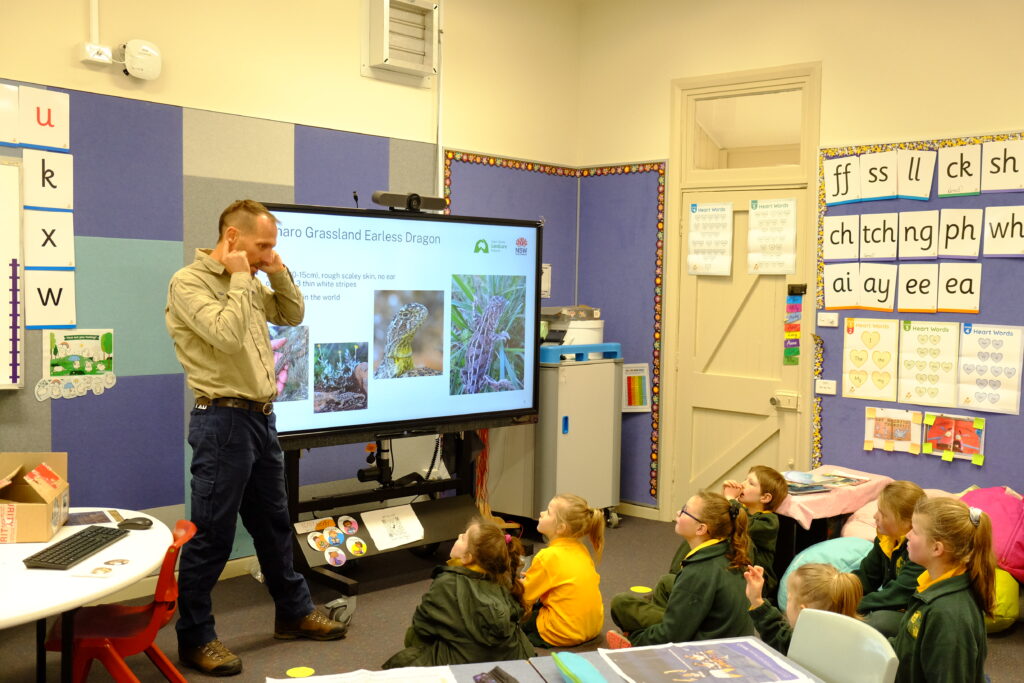
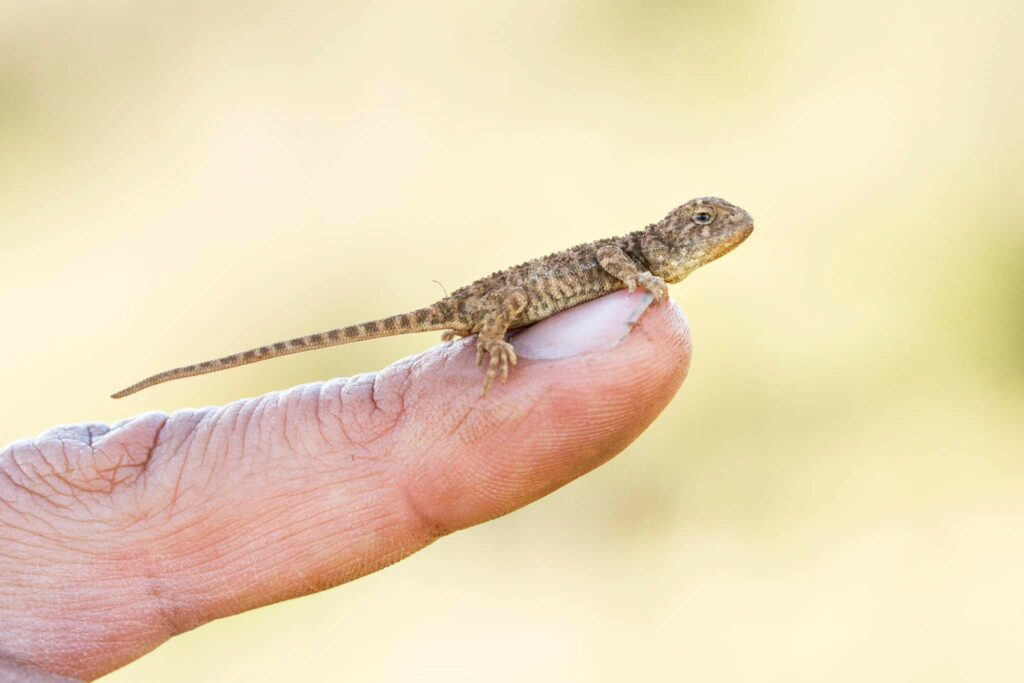
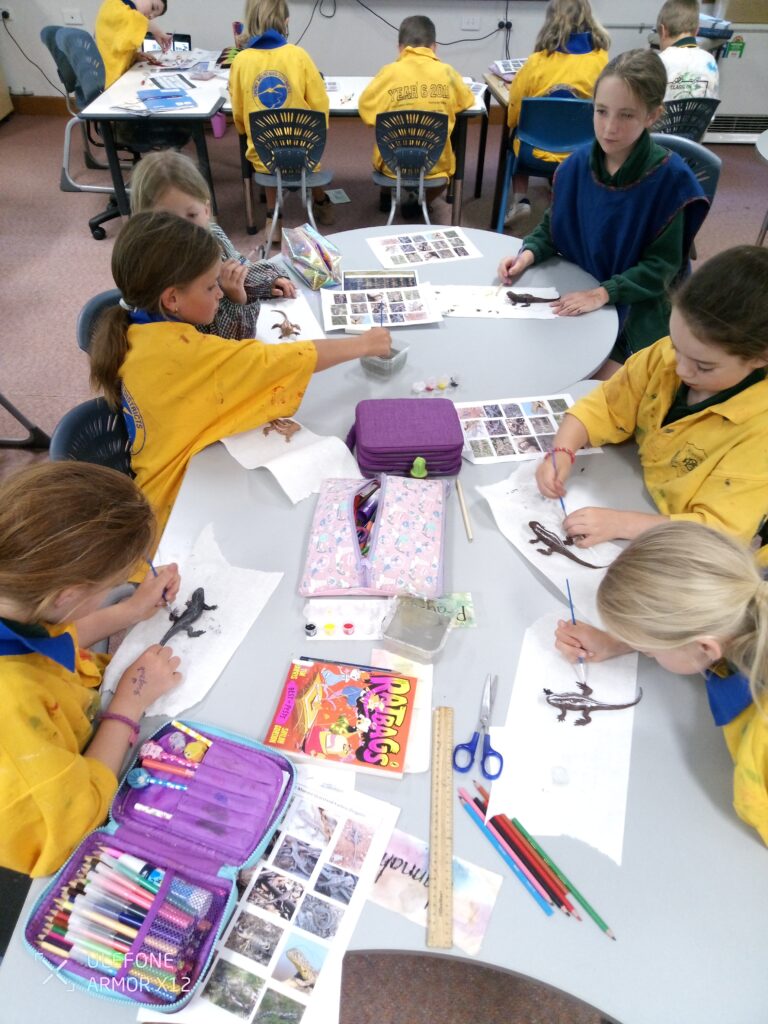
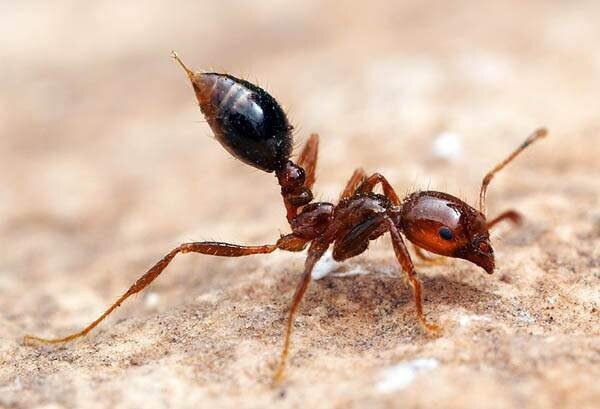
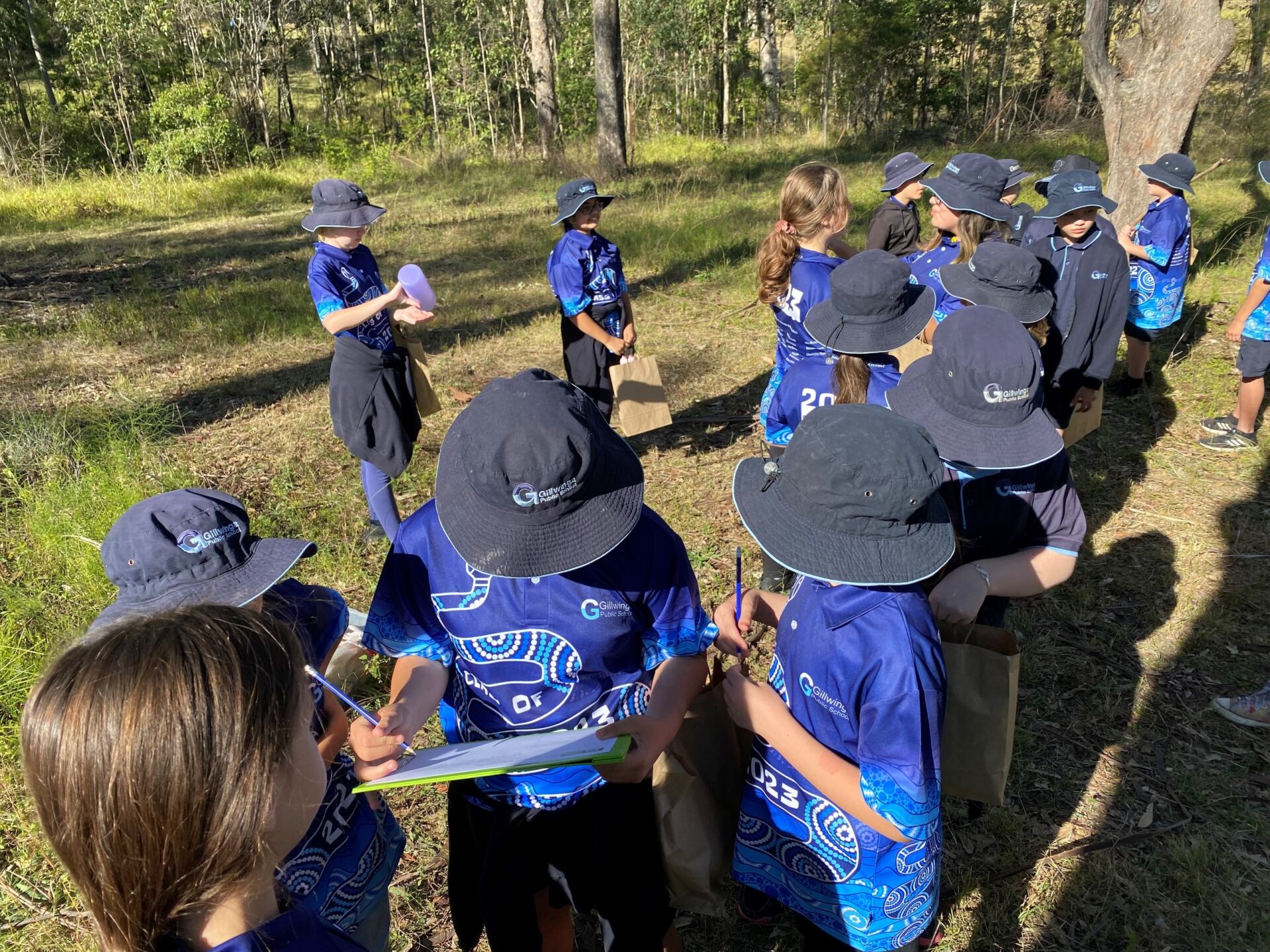
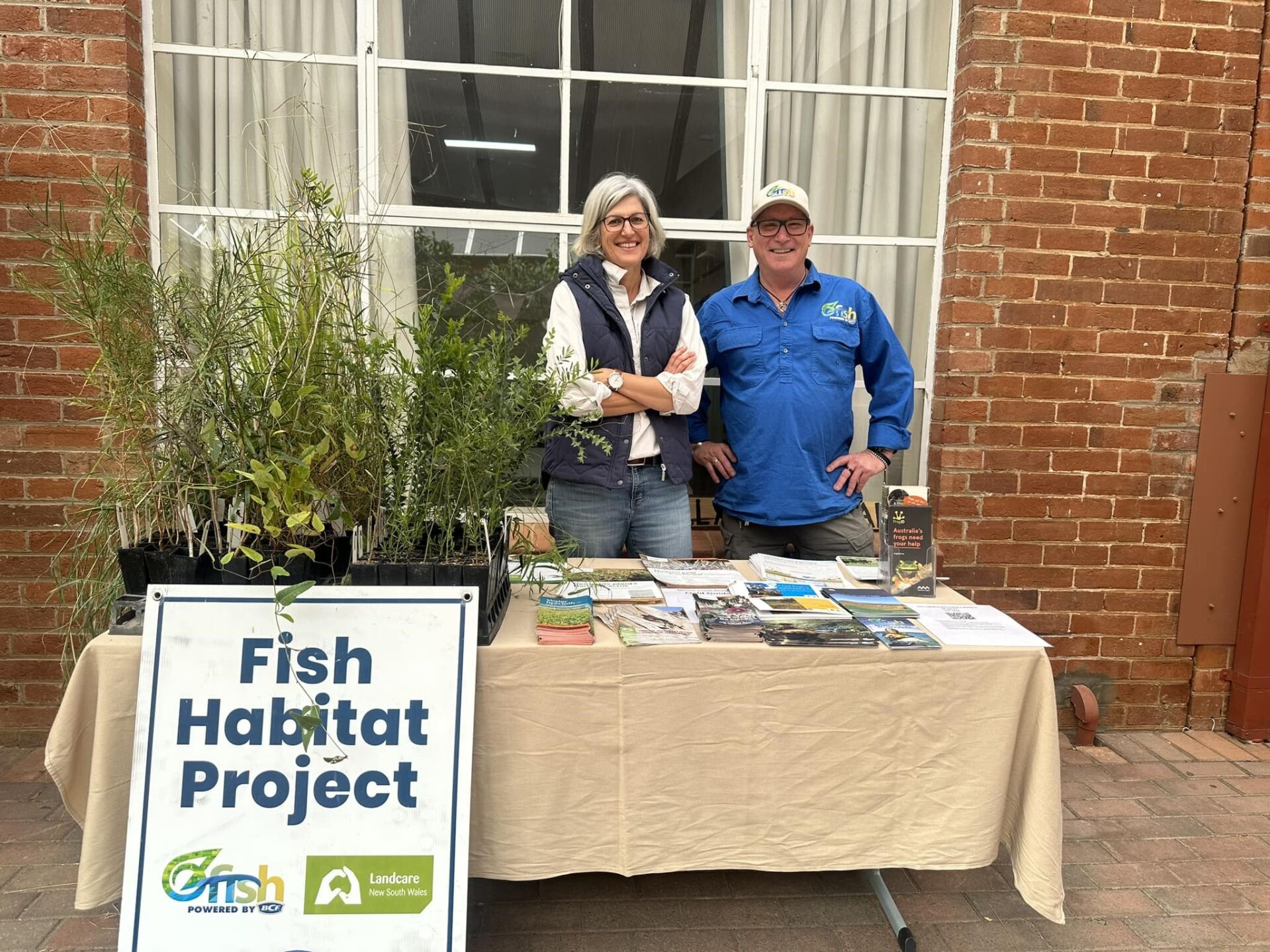
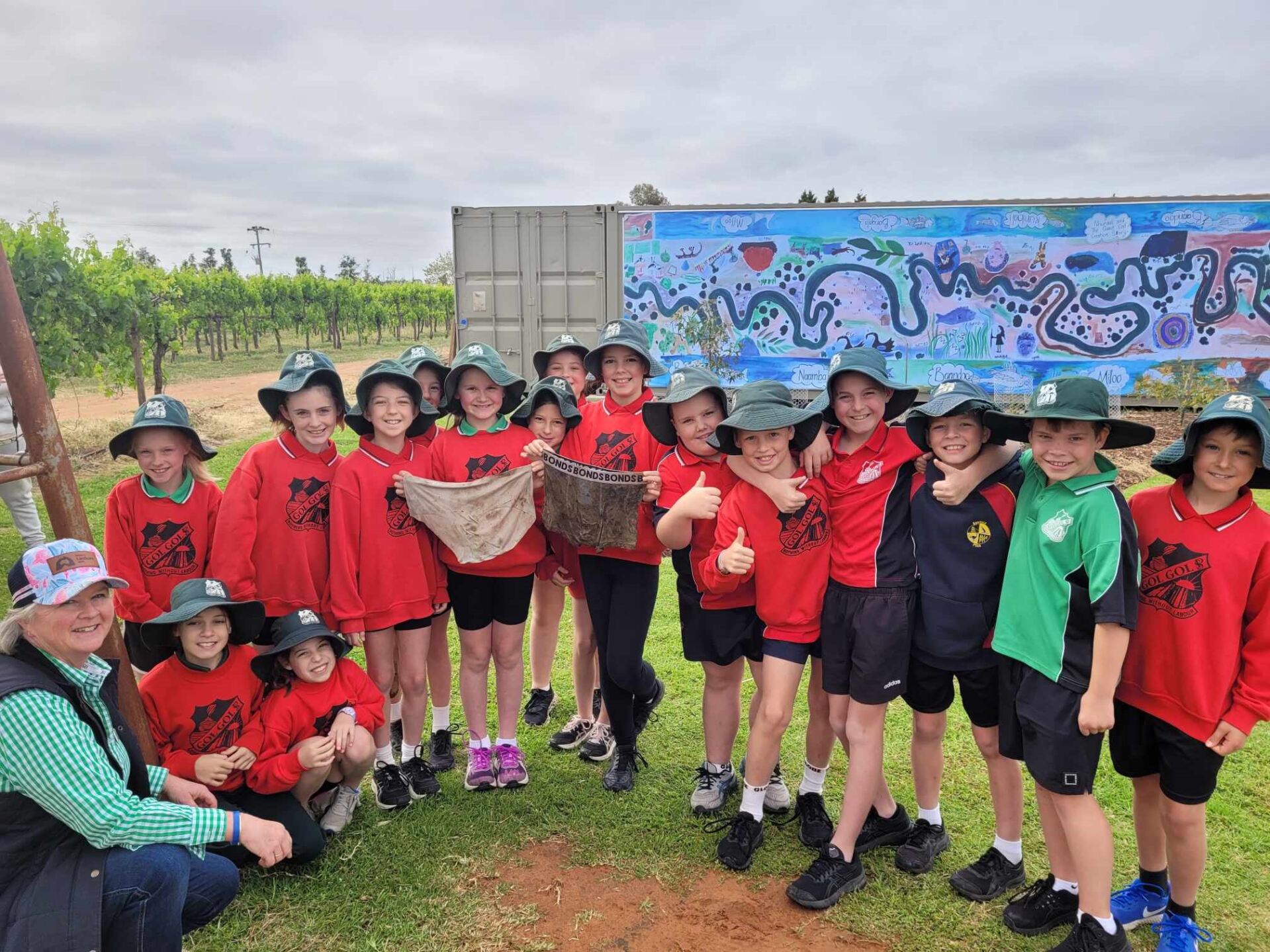
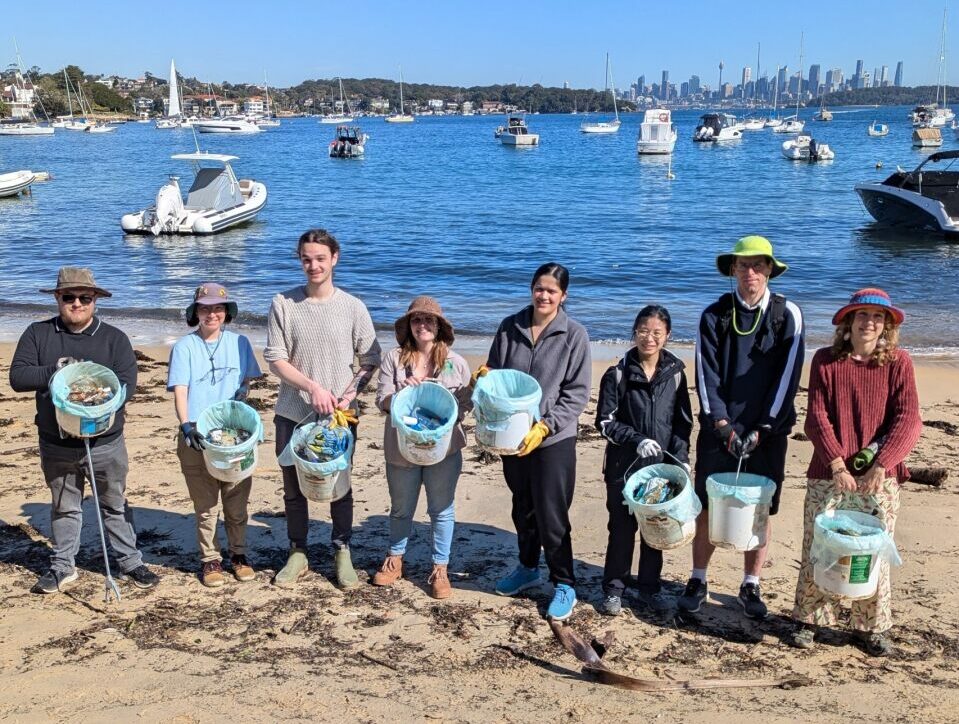

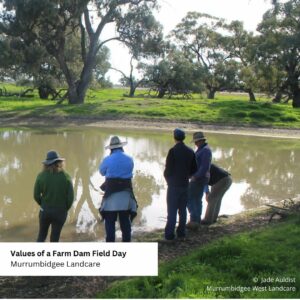
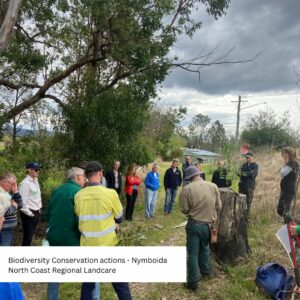
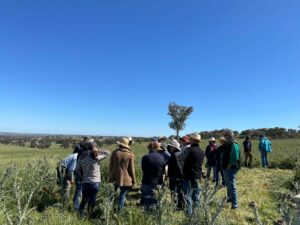 Our leaders were Linda Cavanagh, Boorowa Community Landcare Group and South-East NSW Regional Landcare Coordinator, who is a genius at getting groups to come together on land issues; newly appointed Boorowa Community Landcare Project Officer, Amber Kelly from Rugby; and Scott Hickman from Canowindra who has a mentoring role with the Boorowa Grazing Group and long experience as the Project Officer of the Mid Lachlan Landcare Group Project, Growing the Grazing Revolution.
Our leaders were Linda Cavanagh, Boorowa Community Landcare Group and South-East NSW Regional Landcare Coordinator, who is a genius at getting groups to come together on land issues; newly appointed Boorowa Community Landcare Project Officer, Amber Kelly from Rugby; and Scott Hickman from Canowindra who has a mentoring role with the Boorowa Grazing Group and long experience as the Project Officer of the Mid Lachlan Landcare Group Project, Growing the Grazing Revolution.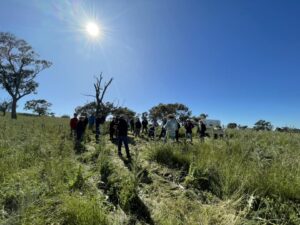 Moving down the slopes the soils are granite derived. The land was attractive and undulating with a scattering of remnant eucalypts. There was quite a bit of discussion about the importance of looking out for volunteer seedling eucalypts and trying to protect them from grazing. Unplanned grazing where stock are left in one place for extended periods tends to lead to the death of these infrequent seedlings. The longer recoveries associated with planned recovery grazing can be the trigger for the appearance of volunteers.
Moving down the slopes the soils are granite derived. The land was attractive and undulating with a scattering of remnant eucalypts. There was quite a bit of discussion about the importance of looking out for volunteer seedling eucalypts and trying to protect them from grazing. Unplanned grazing where stock are left in one place for extended periods tends to lead to the death of these infrequent seedlings. The longer recoveries associated with planned recovery grazing can be the trigger for the appearance of volunteers.